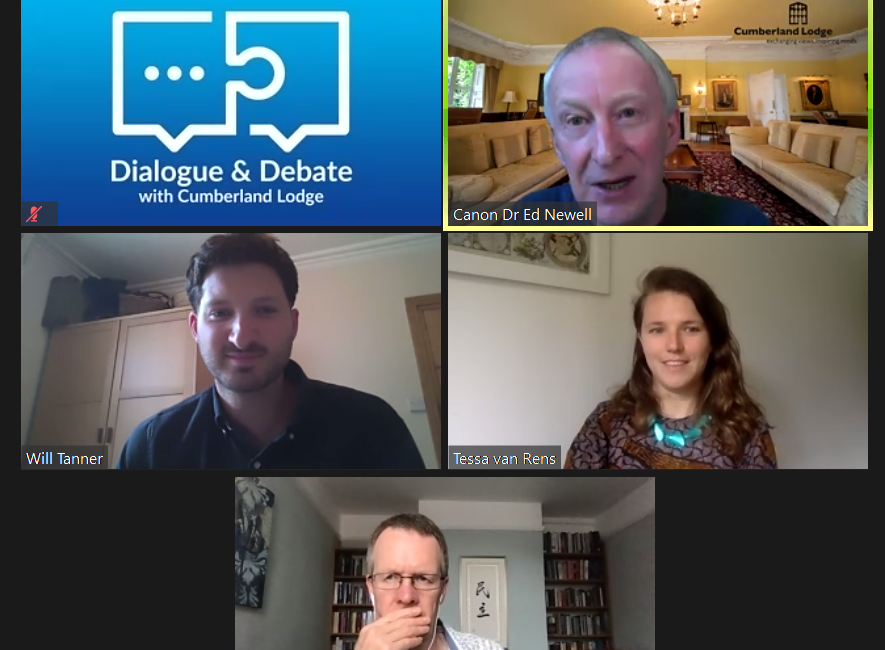While organisations and individuals are continuing to adapt to a new and acute physical health threat, experts on social cohesion are also beginning to run health checks on civil society more generally. On 3 June 2020, Cumberland Lodge hosted Professor Graham Smith, Tessa van Rens and Will Tanner, for a webinar on polarisation and whether it is being diminished or augmented by the COVID-19 pandemic.
Throughout a lively discussion, the panellists highlighted the need to understand polarisation in light of pre-pandemic social divides and drew attention to both the opportunities and risks inherent in a virus that has already spread from individual immune systems to the ‘immune system’ of society at large.
‘Medical’ history
The outbreak of the pandemic found British society in a state of simultaneous stalemate and turmoil. On the one hand, Will Tanner outlined, the 2019 General Election had revealed high levels of political volatility in the ballot box and a growing detachment from partisan politics amongst voters. On the other hand, polarisation across attitudinal divides had split people into painfully sclerotic factions: Leave vs. Remain, the Elites vs. everyday people, London vs. the rest of the country.
As Tessa van Rens highlighted at the outset of this webinar, polarisation is not necessarily harmful. But the ensuing discussion also emphasised how a shift from issue-based divides towards more emotionally charged, so-called ‘affective polarisation’ threatened to smother even the faintest desire for compromise, dialogue and empathy across fault lines.
Has the pandemic re-focused our minds on a collective enemy, blurring the boundaries that previously divided us from them? The pandemic is clearly diverting attention away from certain omnipresent conflicts, most notably around Brexit.
Does this mean that some divides were not as deeply ingrained and incontrovertible as previously thought? Or is COVID-19 just offering a temporary diversion?
What quickly replaced the torrent of us vs. them coverage in the British media was a narrative of shared fate and collective purpose that would have seemed improbable to many commentators before March 2020. Small acts of kindness, extraordinary levels of public spiritedness, and the heroism of individuals, proved a welcome change to how many Britons had come to see themselves and their country: as fractured, polarised and alienated.
Prognosis
And yet, all three panellists cautioned against mistaking this new sense of unity for the final response of our public ‘immune system’ to the virus. Polarisation can quickly replace public spiritedness when, over the course of a prolonged crisis, we discover our own helplessness and find the ‘old normal’ quickly growing smaller in the rear mirror.
This is particularly so when one discovers that not everyone is curtailing their personal freedoms equally, and that the pandemic will leave some members of society significantly more disadvantaged than others. ‘The Coronavirus’, Professor Smith stressed during the webinar, ‘is no societal equaliser. Far from it!’ It is both exacerbating old divides and creating new ones: between old and young, the politically powerful and those they are supposed to represent, people behind plexiglass screens and those in the home-office, and between the digitally included and those without reliable broadband.
These rifts are not temporary or imagined. They are real, will likely affect British society for a long time, and provide fertile ground for a divisive us vs. them mentality to flourish.
Treatment
It is now imperative to translate our heightened awareness of polarisation in the unique British context into a co-ordinated effort to prevent COVID-19 from weakening the body politic with further deep divides.
To this end, the panellists suggested several prophylactic measures. Tessa van Rens highlighted the need for clearly communicated guidelines that leave little space for individual discretion and values-based differences in behaviour to emerge.
At the same time, all three panellists also agreed that now is a time to engage the population in more participatory and deliberative policy-making processes. Processes like (virtual) citizens assemblies would, they argued, take better account of the population’s wide range of circumstances, respect a heightened need to be seen and heard, and respond to the pandemic in a way that would engender trust and acceptance.
Professor Smith noted that the reluctance of leaders to experiment with such innovative tools was limiting the effectiveness of the British response to the pandemic.
However, Will Tanner also issued a word of caution and argued that, ‘we tend to use initiatives like citizens assemblies as plasters to stick on top of what really is a gaping wound in the British democratic system’. He stressed that hyper-localised political institutions which could, in the present crisis, facilitate more credible and effective responses than the UK’s centralised political system, have, ‘been led to wither on the vine’. This, the panellists proposed, is leaving British society woefully exposed to the risk of conflict and polarisation.
As the pandemic’s grip on the healthcare system begins to ease, it is important to recognise that its peak effect on civil society’s proverbial ‘immune system’ is probably a while off. Any government tackling this global crisis, the panellists argued, would be well-advised to engage with all available means of preventing public spiritedness from mutating into polarisation.
Just as it is proving exceptionally difficult to find an effective COVID-19 vaccine, ‘inoculating’ society against the risks of polarisation is no mean feat and will require a multi-pronged approach.
An approach that strengthens hyper-localised political infrastructures, recognises and engages with sections of the population that have been affected in very different ways by the pandemic, and explores participatory policy-making approaches, might just about stand a chance of providing effective prophylaxis.
The challenge will be to channel such prophylactic measures into a balanced and clearly communicated set of guidelines with minimal grey areas.

